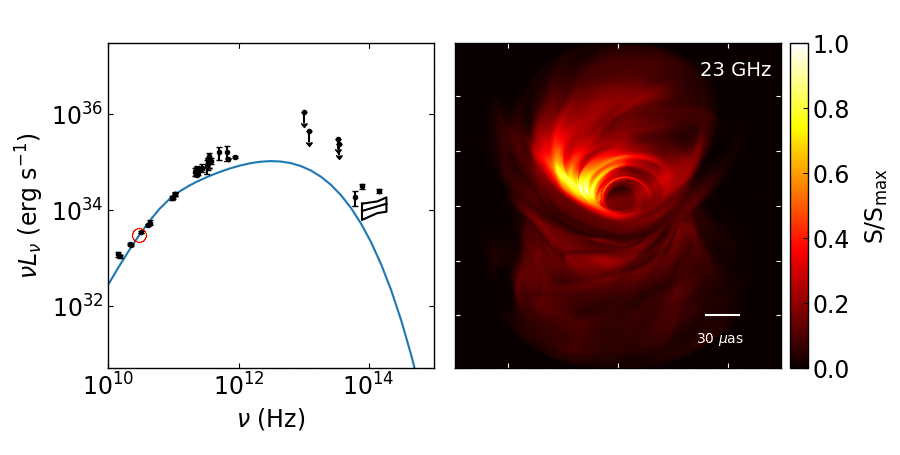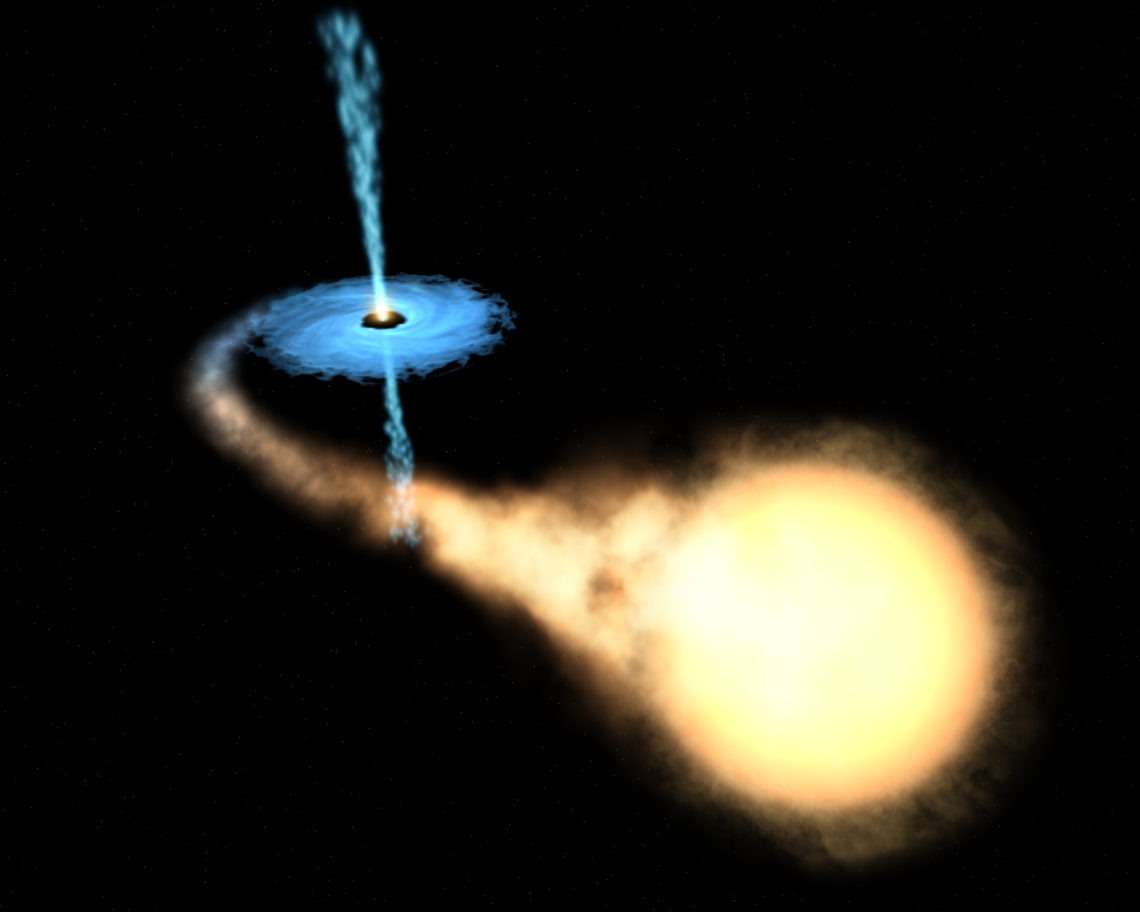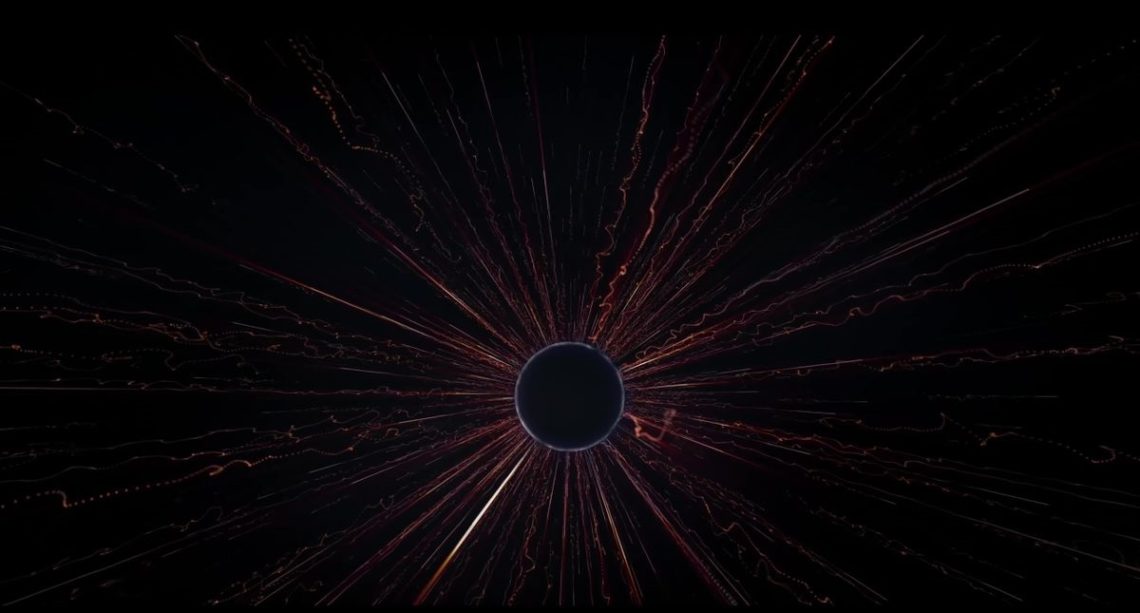…that’s amore! The moon is one of the most beautiful objects in the sky to photograph. Not only is it close enough for us to resolve its craters, its apparent size is also large enough for its light to be distorted by the Earth’s atmosphere. This distortion is what causes the moon to appear to be different colours. It is important to note, however, that the moon does not produce its own light. The moon’s surface reflects light from the sun! If we were to take a photo of the moon outside of the Earth’s atmosphere, it would always appear to be a shade of grey. When viewed from inside…
Read More >>How Big Can a Black Hole Become?
Many celestial objects have certain limitations on their physical properties, governed by the laws of nature. For example, if a planet gains enough mass (around 10 times as massive as Jupiter), they become massive enough to fuse deuterium or lithium, effectively categorizing them as a star. A similar case happens for stars, which are, for most of their lives, in a stable equilibrium between the inward gravitational force of the gas and the outward radiation pressure from the energy generated by the nuclear reactions in the core. The luminosity (and by extension the radiation pressure) is highly proportional to its mass, which means that if you continue to add mass…
Read More >>Wormholes, real or science fiction?
In this blog, I will introduce the mathematical concept of wormholes in general relativity, the possible implications in serious astrophysical research, and how this became an inspiration for the german science fiction series: Dark. With mathematics, it is possible to duplicate the geometry of spacetime, for example, we can make a copy of the Schwarzschild geometry (describing a static Black Hole) in reverse. In this reversed version, the copy behaves as a White Hole where all objects are destined to escape from it, contrary to the case of a black hole. In Fig. 2, if we consider region I being the universe where we live, then by traveling to the…
Read More >>Farewell Doosoo!
This past month, we bid farewell to Doosoo Yoon who has been a postdoctoral fellow in our group since September 2018. His work focused on using the GRMHD code H-AMR to study the dynamics of accretion disks, winds, and jets around black holes. He is also a member of the Event Horizon Telescope (EHT) project, where his main focus is to study supermassive black holes such as Sgr A* and M87. For Doosoo’s farewell dinner, we went to The Madras Diaries in Leidseplein to have some authentic South Indian dishes. A big hit for the group were the dosas, which are a crispy savoury crepe made from lentils and rice.…
Read More >>Exploring the appearance of black hole by Ray-tracing
In my previous blog post, I introduced the General-relativistic Radiative Transfer Code, which is an important tool for computing the radiative properties from simulated results (see “a bridge between observation and numerical simulation”). Today, I would like to provide some examples of how the image of black hole shadow, photon ring and the spectrum would change depending on the different physical properties, some of which are very difficult to be constrained yet. 1. Black hole image in different frequency The well-known monumental image of the M87 black hole shadow, which was announced in 2019, was captured at 230 GHz by the telescopes in the Event Horizon Telescope array. The intrinsic…
Read More >>“The new Hubble”
On December 25th 2021, while many people were opening their Christmas presents, astronomers around the world were getting excited about another kind of present: the James Webb Space Telescope (JWST). Launched at 13:20 on Christmas day, this new telescope built by ESA, NASA, and the Canadian Space Agency, finally made it to space after years of delay due to its complexity and the number of tests it had to go through before being cleared to go up. It is the largest telescope ever sent in orbit and represents not only a real opportunity for astronomy but also a progress in technology and engineering. You are probably familiar with the Hubble…
Read More >>Stellar-mass black holes as particle accelerators
For over a century, scientists have been detecting elementary particles of extraterrestrial origin, known as cosmic rays. These particles carry energy that sometimes exceeds their rest mass by a million times. The mechanism behind this energization and the environmental properties capable of such a process remains unclear. Among these cosmic rays, the dominant population is that of protons. These protons carry energy up to a million times their rest mass (i.e., up to 106 GeV, where ~1GeV is the energy carried by protons at rest), and very likely they originate in our Milky Way. Despite decades of research, the source of cosmic rays remains unclear because, while cosmic rays propagate…
Read More >>Sound Echoes and Echoes in the Universe
When you stand on the top of a hill, and shout your name, after a short delay, you will recursively hear your bellow, although your voice is successively fainted. The returned sound is an echo. You might be curious, why cannot we hear an echo in a room? This is because the human ear cannot distinguish echo from the original sound if the delay is less than 0.1 seconds. The speed of sound through air is approximately 343 m/s, therefore, the reflector (the walls of a room) must be placed more than 17.2 m away from the sound source (a man who is also a recevier here) for the echo…
Read More >>How to Destroy a Black Hole
Black holes are highly destructive objects in the universe, e. g., a star can be destroyed if it gets too close to the extreme gravity of a black hole (figure 1). On the other hand, there is nothing we could throw at a black hole that would damage it, not even another black hole would do it, they will simply merge into a larger one (figure 2). However, there may be a way to destroy these objects, all we need to do is to wait. In 1974, Stephen Hawking realized that quantum fluctuations could lead a black hole to lose mass at a very low rate. These fluctuations continuously create…
Read More >>Scales, scales, scales?! (Part I)
When reading our blog posts, you might find yourself asking what the scale of the black holes, jets, or accretion disks we speak of are. If that is the case, then this post is for you! Given that Halloween just happened, let us choose our base unit as one Jack-o’-lantern pumpkin (JOLP) that is 20 kg heavy and 0.5 meters in diameter. For scale, roughly four JOLPs stacked on top of each other would span a human that is 1.8 meters tall and 80 kg heavy. Right, then how many JOLPs would we need to span the entire circumference of the Earth? Well, we would need about 80 million (80…
Read More >>




